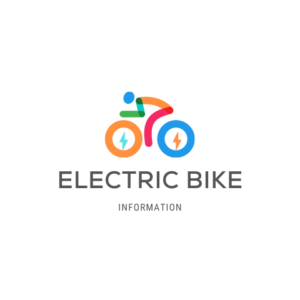Advances in technology over the last few years have seen electric bikes become more popular all over the globe. In 2020 alone, where the real surge in Ebikes began, Ebike sales grew by 144%. In the USA, bike sales surged by 65% and in the U.K, 70%. They’ve become far more common and show no signs of halting. However, their terminology and operation oftentimes confuse people who are interested. Are they like an electric motorbike? Do they have a throttle and does the rider even need to peddle? Electric bikes are pretty simple and this article will help clear up what electric bikes actually are so you can make an informed decision regarding whether or not you want to buy one.
What Makes An Ebike Electric?
An electric bike is just like a normal bike, however there is a battery attached to the frame which supplies an electric motor that helps turn the pedal, meaning it takes less effort on the rider’s part to get the bike moving. Some bikes are “electric assist” meaning the rider has to pedal still and there isn’t a throttle, while others have a bit more power and can be used with a throttle.
Wondering how fast an electric bike can go?
What Makes Up An Electric Bike
On most electric bikes there are three key components that set them apart from a usual push bike. Placements of each component differ, as well as the quality and longevity. The three components are:
Electric Motor
The electric motor provides torque while you pedal (or, drives the bike when you use a throttle on certain models). The better, or more developed the electric motor, the more torque it provides.
Motors can either be placed on the front wheel, rear wheel, or in the middle for mid-drive. Each has different benefits and drawbacks.

Battery
You can’t have an electric bike without a battery. Again the location of the battery can depend on the bike, as can the level of power the battery itself puts out. Some batteries need charging for longer than others, depending on the model and make. A battery usually takes around five hours to charge. They’re usually lithium-ion batteries, but there are other kinds too. They will degrade over time, as explained by our article on how long a battery lasts.

The Sensor
Sensors come in different shapes and sizes but usually, they’re either a torque sensor or speed sensor. It’s probably one of the most vital components of an electric bike.
The speed sensor tells the motor to kick in when you start pedaling, giving the rider an electrical assist. However, it can also cut the electric motor when you hit a certain speed for safety and ebike speed limit reasons.
The torque sensor is usually thought to be a bit more advanced because it directly responds and matches the power you’re putting into the pedals. It’s a more dynamic and responsive form of electrical assistance that allows you to modulate your speed in an easier way.

What About The Braking System
Unless you’ve got a throttle ebike, any electric assist is usually cut once you stop pedaling. With that said, ebikes are usually a fair chunk heavier than normal bicycles. Electric bikes weigh around 45 pounds (18 kg) while a normal bike weighs 30 pounds on average (12kg). Ebikes are around 40% heavier. It means they take a little longer to stop when you pull the brakes so make sure you factor that into your stopping distance so you that you remain safe while riding. It’s something you’ll get used to pretty quickly however, it’s also something that will trip new ebike riders up when cycling in the rain or when having to brake fast. If you’re new to ebike, or are just now thinking about purchasing an electric bike it’s worth testing the breaks out first and getting a feel for your stopping distance. If you’re going to ride in the rain where it’s wet then gauging your stopping distance is even more important. Electric bikes can get wet but in the rain the stopping distance is certainly going to be affected especially if you’re using the throttle.
Electric Bikes Round-Up
There you have it. An electric bike is the same as a pushbike, apart from the battery, motor and sensor used to give the rider an assist when they’re peddling. Some will have a throttle depending on the ebike they choose to get. Working out what’s right for you can be tough. It depends on how much exercise you want to get out of it. It also depends how many hills there are to conquer on your commute, or whether you just ride the bike on weekends.
They’re nothing like electric motorbikes. Ebikes are a little heavier than their non-electric counterparts, but their speed is usually capped at how fast someone can pedal.

